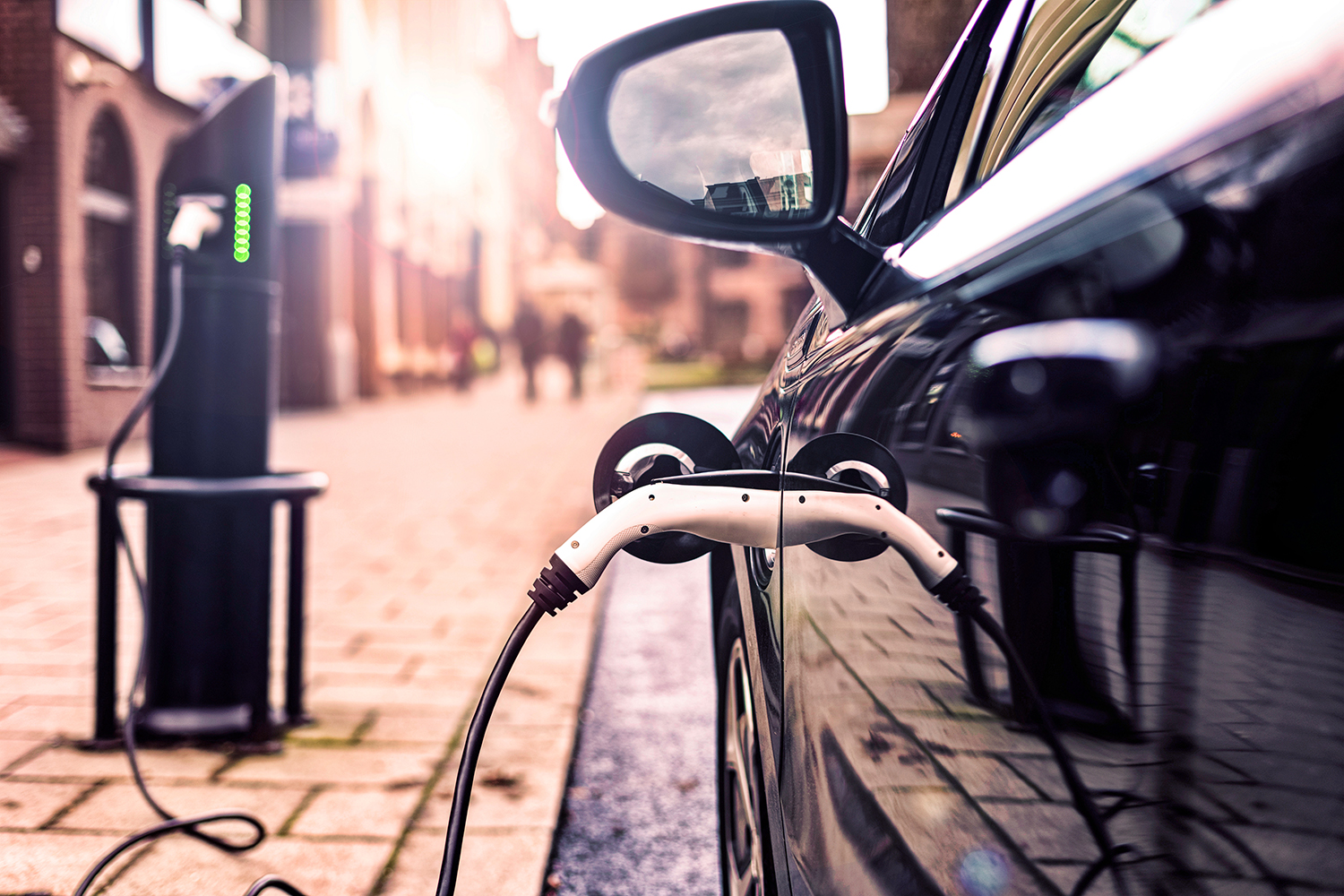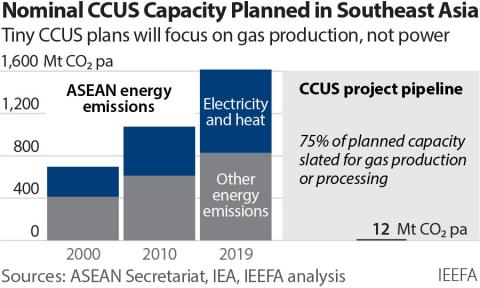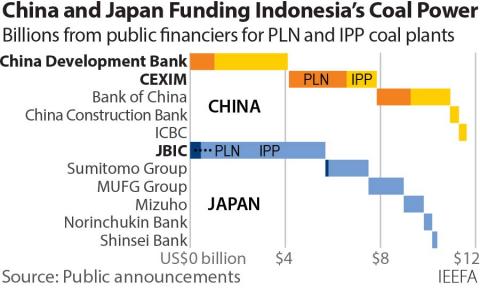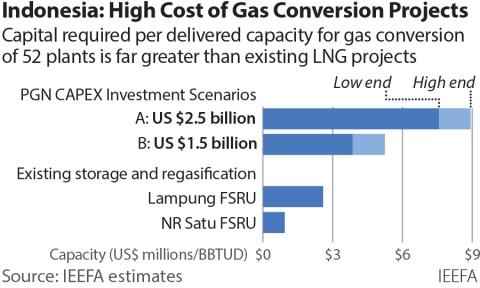Legacy automakers can make or break Indonesia’s EV ambition

Accelerating the electric vehicle transition likely requires assertive push and pull measures
6 February (IEEFA Asia): Electric vehicles (EVs) in Indonesia have captured headlines, most recently during the G20 Bali Summit last November. The largest automobile market in Southeast Asia is flaunting its nickel resources as leverage, but the current EV trajectory is deemed insufficient to meet ambitious domestic targets.
The Institute for Energy Economics and Financial Analysis (IEEFA) has released a new report by energy analyst, Putra Adhiguna, which examines Indonesia’s policy directions and potential misalignment between its EV ambition and the legacy automakers’ intentions. The automakers’ muted electrification plans, coupled with their market dominance, can make or break the EV ambition.
Five of the companies analyzed in this report together command 92% of Indonesia’s light four-wheeler (4W) sales: Honda, Mitsubishi, Suzuki, Toyota and its subsidiary Daihatsu. The concentration of the two-wheeler (2W) market is even more pronounced, with Honda and Yamaha holding a combined 96% share. But their record on electrics is nowhere near the scale of their commercial strength; in FY22, Toyota’s battery EV (BEV) comprised 0.16% of its global unit sales, while Honda’s 2W EV sales were largely negligible. Positive moves toward electrics have been noted, but plans remain sluggish, especially for emerging markets.
Indonesia has set aggressive targets of 13 million electric 2Ws and 2.2 million electric cars by 2030. However, the country is still potentially lagging behind its Southeast Asian neighbors. Thailand is forecast to adopt 4W EVs much faster, while Vietnam has been leading 2W EV sales by a significant margin. Thailand’s competing role as the region’s leading auto manufacturing base raises the stakes further.
Energy demand growth in transport is rising fast, comprising roughly a quarter of Indonesia’s energy greenhouse gas emissions. Reconciling the country’s terminal oil production decline and rising oil demand remains improbable in the absence of a strong position by the state leadership.
EVs consume energy about three times more efficiently than traditional internal combustion engine vehicles (ICEVs), which convert only 12% to 30% of the energy in the fuel tank to power the wheels.
With rising oil imports and volatile fuel subsidies, EV adoption can ease oil demand growth and lower life-cycle emissions, even in coal-dominated power grids like Indonesia’s, but Adhiguna emphasizes that a strong commitment toward greening the grid must be maintained in parallel to the EV’s decarbonization of road transport.
Regulators’ light-touch approach to automakers needs to change
Adhiguna notes that promoting a fuel economy standard is important as it curbs both oil demand and carbon emissions. It is a common policy tool, yet its absence in Indonesia suggests that policy commitments have been mixed. Current initiatives mainly focus on new EV establishments but largely omit fuel economy targets, including from the Nationally Determined Contribution.
“Indonesia’s light vehicle fuel consumption is about 40% higher than India’s, and it does not reflect well on a country which supposedly worries about its oil imports. Mandated targets such as fuel economy should be put in place immediately to pressure the legacy automakers toward more efficient vehicles,” says Adhiguna.
According to Adhiguna, stakeholders will need to demand that the automakers align better with the strategic national interests of deploying more fuel-efficient vehicles, reducing emissions, and shifting to future EV industries.
“To have a credible plan, Indonesia needs both the ‘push’ of EVs, and proper ‘pull’ measures to restrain oil demand growth stemming from ICEVs,” says Adhiguna. Current plans for progressive vehicle tax based on emissions and fuel consumption are highly commendable, but more action is likely needed.
Challenge of market dominance
“The market dominance of the legacy players should also be addressed openly. Their emphasis on the various types of hybrid cars could potentially sidestep Indonesia’s BEV ambition if left unmanaged. Furthermore, with ICEV phaseout plans in developed countries, there is a potential spillover risk from legacy players attempting to entrench their ICEV products deeper in emerging markets,” says Adhiguna.
As global ICEV sales last peaked in 2017, legacy automakers face a two-fold challenge: a decline in ICEV demand and the need to adapt to the electrified future.
“While most of them are currently leaning toward a slower battery EV adoption, their industry might hold great potential in reducing the transport sector’s reliance on imported and volatile energy resources in many countries.”
Adhiguna notes that Indonesia’s 4W and 2W auto segments are respectively operating at 48% and 36% below their production capacities, clouding the EV ambition. “With Indonesian auto sales below their peak in 2011-14, the spare production capacity will likely further disincentivize the legacy automakers to move away from ICEVs.
“Their bet on the ICEV industry is, nevertheless, a business risk, and should not entirely relegate other national interests to a lower priority,” adds Adhiguna. “Given their long history and market share, the government can also consider facilitating their transition through resource access and preferential policies under strict alignment toward Indonesia’s EV goal.”
Real-world assessments
Adhiguna notes that the government should also consider real-world fuel savings and emission reduction benefits. “Conventional hybrids have been marketed for over 20 years and are ultimately powered by gasoline, while plug-in hybrid benefits are conditional upon user charging behavior. Each has its merits, but care must be taken not to blur the lines between the various electrified vehicles.
“Experiences in other markets show that the claimed benefits can differ widely from real-world results, a crucial consideration in providing government support.”
Domestic entities of the automakers are expected to proactively shape the views of their respective principal on EV adoption. A disconnect in the overall narrative of the legacy automakers is also noted across markets. In contrast to their strong reservations regarding BEV challenges in Indonesia, moves toward low-cost mini-BEVs are ongoing in the Japanese market in response to competition from Chinese EV entrants. “It is also quite telling that the electric 2W has not really taken off despite Indonesia being one of the largest markets globally,” says Adhiguna.
“The legacy automakers have emphasized providing diverse mobility options for consumers, but the all-electric options remain largely absent from the table.”
Without these market concerns being openly addressed, the public will raise serious questions about whether Indonesia’s current BEV buildout ambition is aimed at a more efficient and lower-emission domestic transport sector or targeted largely for export.
“Ultimately, the EV is not a single solution for all the problems in transport. Attention to public modes of traveling, well-designed urban developments and alternate mobility options will all need to be maintained, but the legacy automakers should not be left unchecked as they can be very influential.”
Read the report: Electrifying Indonesia’s Road Transport
Read this press release in Bahasa Indonesia: Arah Bisnis Produsen Otomotif Besar Dapat Menghambat Ambisi Kendaraan Listrik Indonesia
The fact sheet of this report is available here.
Report contact:
Putra Adhiguna ([email protected])
Media contact:
Alex Yu ([email protected]) Ph: +852 9614 1051
About the author:
Putra Adhiguna is an energy analyst focusing on energy transition in the context of emerging economies. His coverage includes the various facets of energy investment, power, oil, gas, and the transport sector. As an energy professional of over 15 years, he has led numerous high-profile projects and held various leadership positions in Fortune500 companies.
About IEEFA:
The Institute for Energy Economics and Financial Analysis (IEEFA) examines issues related to energy markets, trends and policies. The Institute’s mission is to accelerate the transition to a diverse, sustainable and profitable energy economy. (www.ieefa.org)













